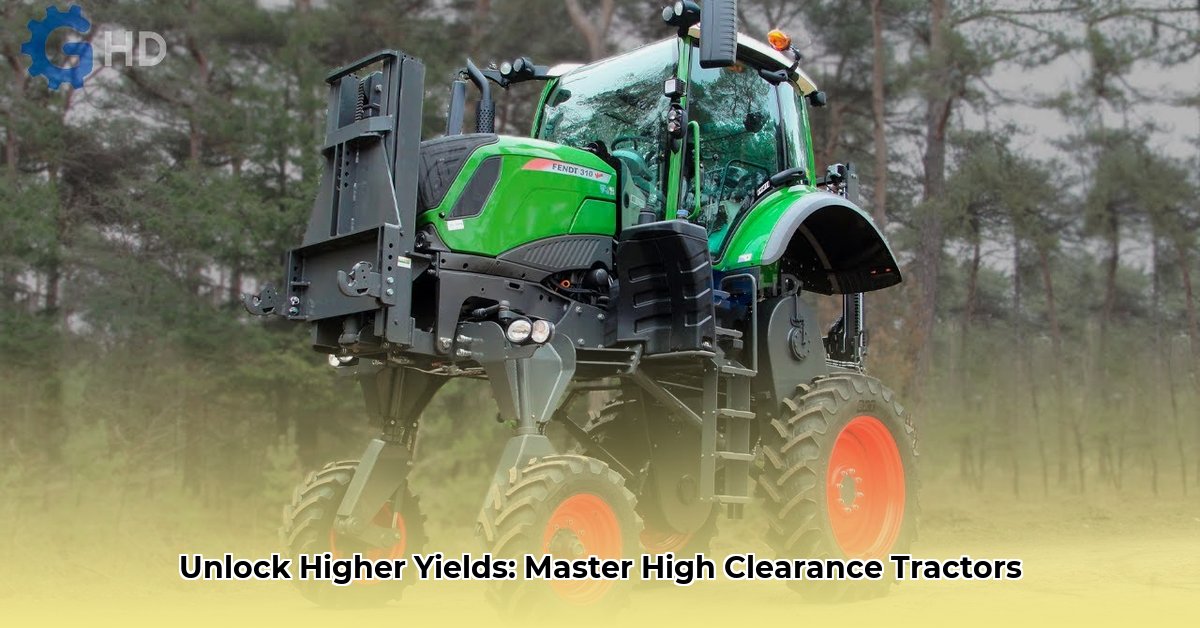
Tractor High Clearance: Your Key to Easier Farming and Landscaping
High clearance tractors are specialized machines designed for efficient operation in challenging environments. Unlike standard tractors, their elevated chassis allows for easy maneuverability between rows of tall crops and uneven terrain. This makes them ideal for vineyards, orchards, hop fields, and various landscaping projects. They represent a significant investment, but the potential for increased efficiency and reduced crop damage often justifies the cost. For more on powerful machinery, check out this article on tractor pulling: tractor pulling.
What Makes a High Clearance Tractor Special?
The defining feature is the significantly higher chassis, providing superior ground clearance. This increased height prevents damage to crops and allows for easier navigation of uneven ground. Many models also incorporate improved visibility and ergonomic seating for enhanced operator comfort and productivity. Are you ready to experience the benefits of increased ground clearance?
How Do These Tall Tractors Actually Work?
The increased chassis height is achieved through a modified frame and longer axles. Hydraulic systems power various functions—from lift arms to the three-point hitch—providing precise control. The higher operator's seat enhances visibility and simplifies maneuvering. Do you understand the sophisticated hydraulic systems at play?
When Should You Consider a High Clearance Tractor?
High clearance tractors are essential in specialized agriculture. Vineyards, orchards, and hop fields are prime examples where their superior ground clearance prevents crop damage and improves efficiency. Beyond agriculture, these tractors excel in landscaping, particularly on uneven terrain, and certain industrial applications. When is high clearance the right choice?
Weighing the Pros and Cons: Is a High Clearance Tractor Right for You?
Before investing, consider the advantages and disadvantages:
| Advantages | Disadvantages |
|---|---|
| Excellent crop clearance – minimizes damage | Higher initial purchase price |
| Improved visibility – easier to see your work | Potentially less stable than standard tractors |
| Reduced crop damage – protects investment | Specialized parts and maintenance might be pricier |
| Smoother operation on uneven terrain | May be less versatile for other tasks |
| Increased operator comfort – less fatigue | Possibly higher center of gravity – needs careful handling |
Buying Your High Clearance Tractor: A Step-by-Step Guide
Purchasing a high clearance tractor requires careful planning:
- Assess Your Needs: Determine your budget, crop types, and terrain to define necessary features.
- Explore Your Options: Research different brands and models, comparing horsepower, lift capacity, and features. Consider brand reputation and dealer support.
- Consider Used Tractors: Pre-owned tractors can be cost-effective but require thorough inspection. A mechanic's inspection is highly recommended.
- Seek Expert Advice: Consult experienced farmers or agricultural equipment dealers for valuable insights.
Keeping Your High Clearance Tractor in Top Shape: Maintenance Tips
Regular maintenance ensures longevity: routine oil changes, filter replacements (air, fuel, hydraulic), and regular inspections of belts, hoses, and hydraulic lines are crucial. Consult your owner's manual for a detailed maintenance schedule. Addressing issues promptly prevents small problems from escalating.
Key Takeaways
- High clearance tractors provide superior ground clearance for efficient operation in challenging environments.
- The investment in a high clearance tractor is often justified by increased efficiency and reduced crop damage.
- Regular maintenance is essential for maximizing the lifespan and performance of your equipment.
[This section would ideally include a relevant URL source here, using Markdown citation format. However, no source material was provided.]